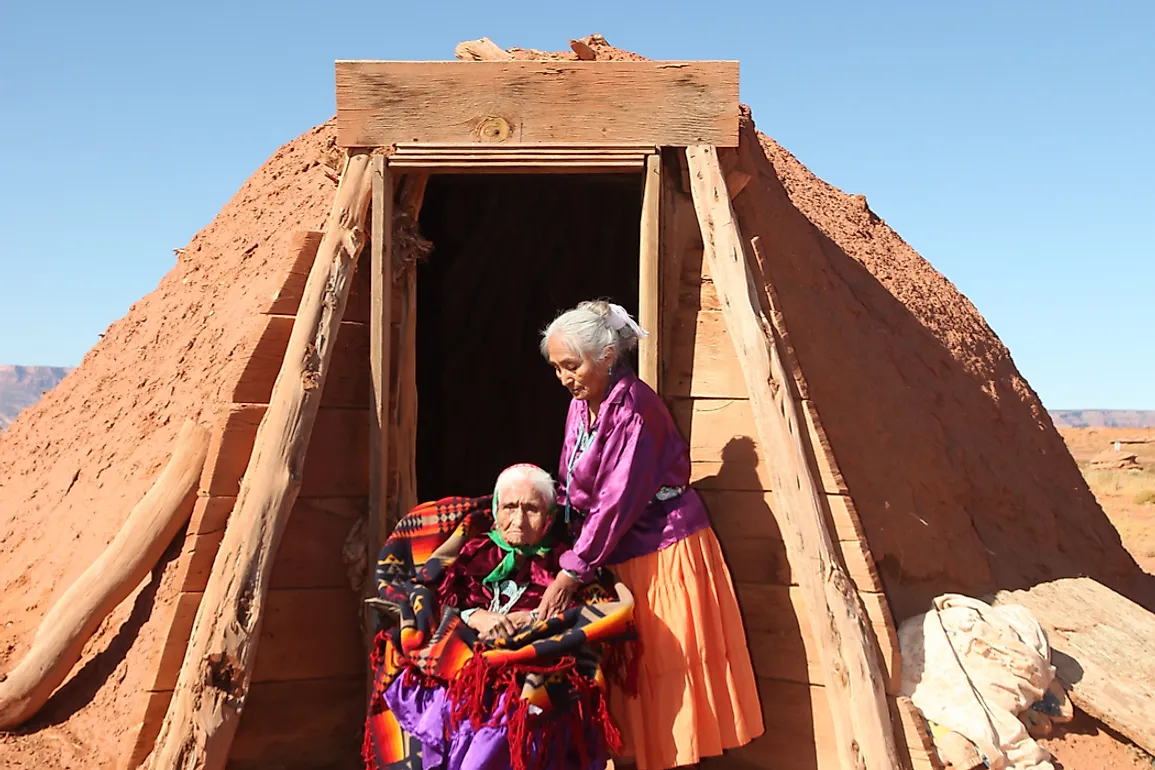Who Are the Navajo People?

The Navajo people are a Native American tribe of the Southwestern United States. They are the second largest recognized tribe in the U.S after the Cherokee. As of 2015, about 300,460 people were considered members of the tribe. The Navajo Nation is responsible for managing the Navajo reservation which includes more than 27,000 square miles of land in New Mexico, Utah, and Arizona. A majority of the people speak the Navajo language and English.
History
The Navajo are considered speakers of the Na-Dené Southern Athabaskan language. The language is related to the Apache language. It is believed that the Navajo and the Apache communities migrated from eastern Alaska and Northwestern Canada where several other Athabaskan speakers reside. Historical evidence suggests that the ancestors of the Apaches Navajos tribes might have migrated to the Southwest United States in the early 15th century. They were originally hunters and gathers until they made contact with the Spanish and the Pueblos who were mostly farmers. They learned the art of farming from the Pueblo and animal keeping from the Spanish. The Spanish and the Navajo people coexisted until 1800 when the Spanish governor Chacon led a contingent of 500 men to fight the Navajo in the Tunicha Mountains. The Spanish and the Navajo continued raiding each other until 1805 when a peace settlement was agreed. However, the Comanche, Spanish, Navajo, Hopi, and the Apaches continued with the pattern of conflict and peace agreements until the Americans settled in the area in 1846.
Culture
Just like the Apaches, the Navajos lived a semi-Nomadic life until the 20th century. They lived in extended kinship groups and moved from one place to the other in search of grazing fields and agricultural land. Their traditional economy involved the formation of groups for trading and raiding parties. Structured systems of clans define the relationship between communities, families, and individuals. The clan is based on exogamous marriage which means people can only marry partners from other clans. The marriage system is matrilineal; once married the man would move from his clan and settle into the woman's clan particularly near her mother's place. Women own the livestock as well as agricultural and grazing land. Daughter and female relatives received the larger portions of the family inheritance. The children born in a wedlock belonged to the mother’s clan. The mother’s older brothers played a significant role in the children lives, they also represented the mother’s clan during political and cultural activities.
Spiritual and Religious Beliefs
The Navajo people believed that for a man to be born on earth, they must have gone through three worlds. The earth person “Dine" has the responsibility of maintaining a balance between the earth and humans and must have a good relationship with the Diyin Diné (Holy People). They believe in the creation theory (Din Bahane'), but unlike the Christian version, four holy people lived in the holy land that was too dark for life to thrive and so they moved to the next world. The second world was blue and could support only a few mammals, they headed to the third world, but the geography was mountainous and constantly flooded. They moved to the fourth world which is present day earth.











